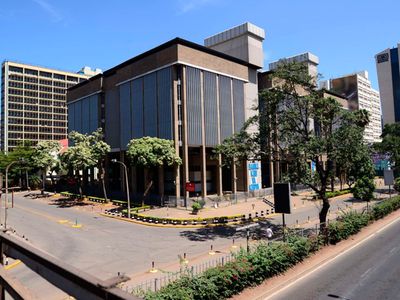South African financial markets have to weather the storm that has pounded them over the past two months.
Equity prices, the rand exchange rate, and bonds recovered strongly, as commodities especially precious metal prices remained elevated. The absence of load shedding has also played a role.
The steady decline in oil prices, and inflation in the US, as measured by the change in personal consumption expenditures (PCE) and a drop in US bond yields, boosted share prices across the globe on Friday.
Although the US PCE Price Index increased on an annual basis by 2.7% in March, up from 2.5% in February, beating the 2.6% that was expected, traders, analysts and economist still expect the US Federal Reserve will start to decrease interest rates during the second part of the year. All eyes are now on the Feds interest rate decision this week.
Although the increase in South Africas producer price index inflation rate was 4.7% in March against 4.6% in February and above market expectations of 4.3%, which remains a worry financial markets ended the week the strongest in the past eight weeks.
On the JSE last week, the All Share Index shot up by 2.7%, the All Industrial Index gained 5% and the FIN15 Index rose by 4.2%.
The stronger rand contributed to resources losing ground as the RES10 dropped by 1.4%. On the foreign exchange market, the rand improved by thirty-eight cents last week, from R19.14 against the previous week to R18.74 at the close on Friday.
We still expect that the rand will appreciate to average levels of around R17.80 to the dollar during quarter four. On precious metal markets, the gold price moved $54 (R1014) lower last week and closed at $2337 per ounce. The platinum price decreased by $34 per ounce to $R916. Bitcoin traded the week flat around $63 000 after it jumped to $66 500 last Monday.
In the US, the news that the inflation measure, the PSCE index, increased more than expected had an initial negative effect on share prices, although the US dollar remains strong.
Data on new orders for manufactured durable goods in March in the US, that was released on Thursday, showed an increase of 2.6% month-over-month. This was marginally exceeding market expectations of a 2.5% increase. These numbers and the positive sentiment of a decrease in US interest rates within the next six months boosted US equity prices at the close on Friday. The total equity index on Wall Street traded 2.7% higher over last week. The Dow Jones Industrial index was up by 0.7%, and the S&P500 gained 2.67% on the previous Friday.
This coming week, the economic calendar for domestic indicators awaits the release by the Reserve Bank on Tuesday of the economys balance of trade data. Absa will release its Manufacturing Purchaser Managers Index for April on Thursday.
Movements on global and domestic financial markets this week will be dominated by the US Federal Reserves Federal Open Market Committee (FOMC) interest rate decision meeting, starting on Wednesday. The decision will be released on Thursday. Although there is a consensus that the FOMC will not change its current Bank rate of 5.25%, the devil is in the words that will indicate either the hawkish or dovish mood of the committee. All eyes will be on any indication of when the Fed expect to lower rates and by how much.
The release of the US non-farm payrolls data this coming Friday will give a definite direction to equity prices, the US dollar and bond rates. The three main indicators will be the number of new jobs created last month, the unemployment rate and the hourly wage movement over the last year.











